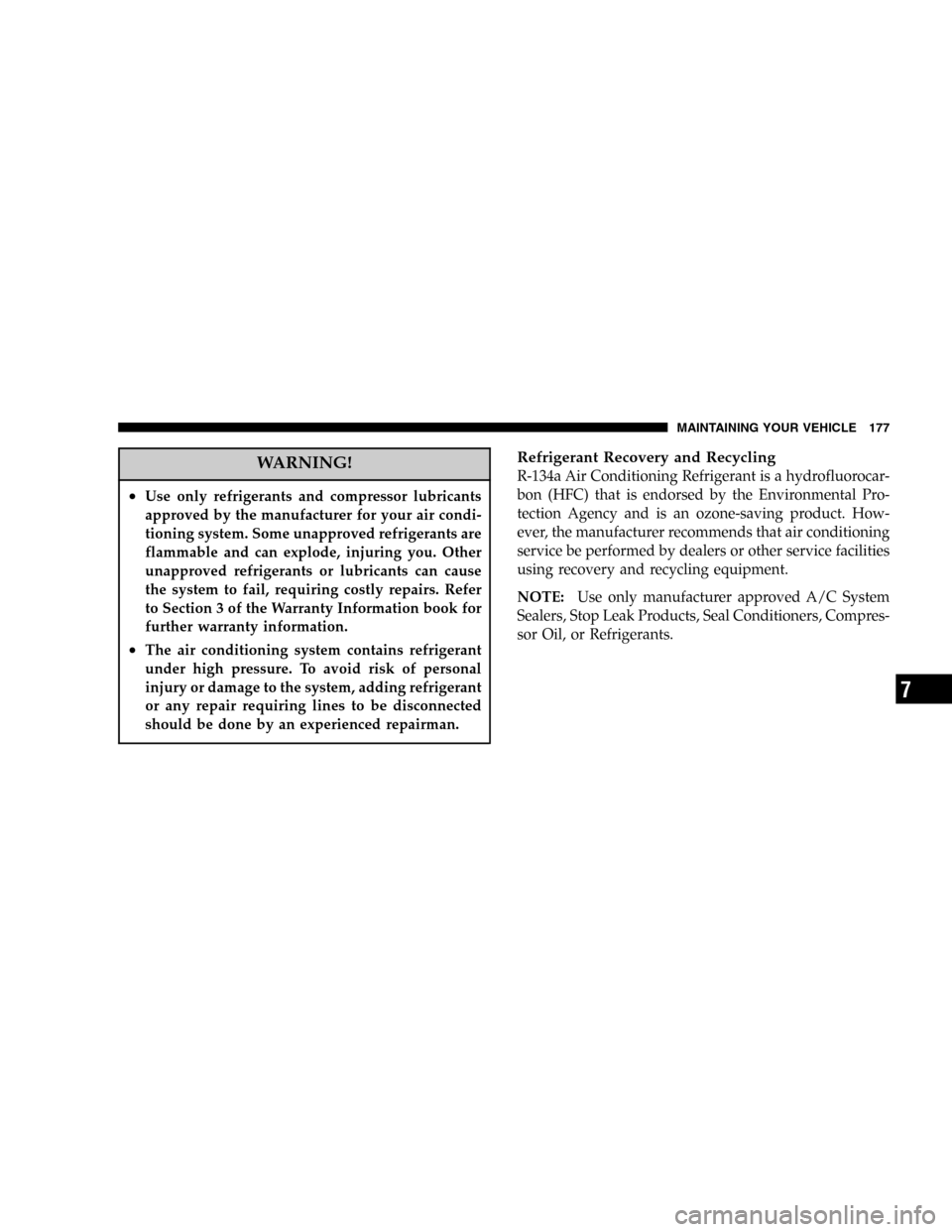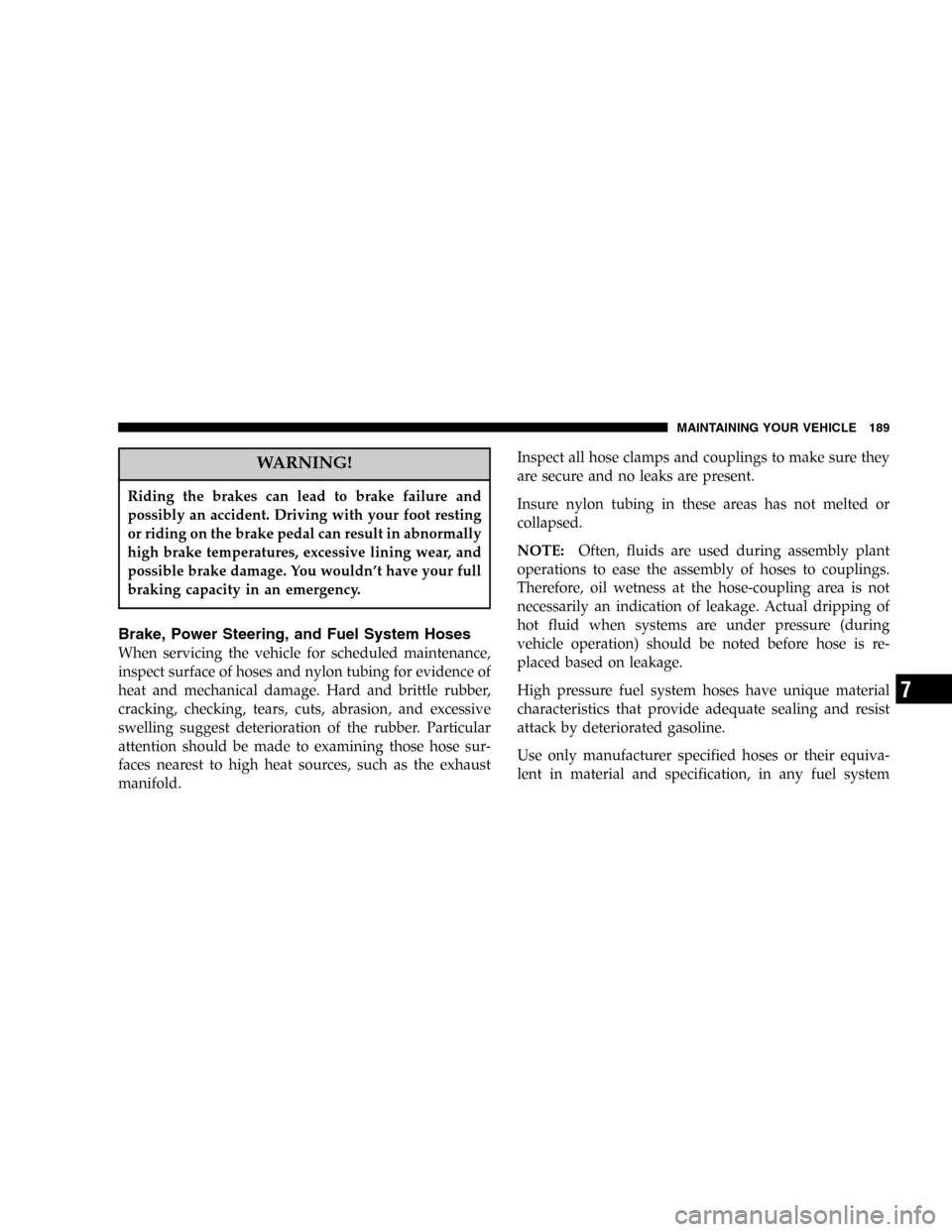Page 52 of 264
Safety Checks You Should Make Outside the
Vehicle
Tires
Examine tires for excessive tread wear or uneven wear
patterns. Check for stones, nails, glass, or other objects
lodged in the tread. Inspect for tread cuts or side wall
cracks. Check wheel nuts for tightness and tires for
proper pressure.
Lights
Have someone observe the operation of exterior lights
while you work the controls. Check turn signal and high
beam indicator lights on the instrument panel.
Fluid Leaks
Check area under vehicle after overnight parking for fuel,
water, oil, or other fluid leaks. Also, if gasoline fumes are
present, the cause should be corrected immediately.
52 THINGS TO KNOW BEFORE STARTING YOUR VEHICLE
Page 90 of 264

Trunk Ajar Light
This light indicates that the trunk is not latched.
Engine Coolant Temperature Light
A red LED light on the Coolant Temperature
gauge will illuminate to warn of an overheated
engine coolant condition.
Low Oil Pressure Light
A red LED light on the Oil Pressure gauge will
illuminate to indicate low engine oil pressure. The
light should come on briefly as a bulb check when the
engine is first started. If the light stays on or comes on
while driving, stop the vehicle and shut off the engine.
DO NOT operate the vehicle until the cause is corrected.
NOTE:This light does not indicate how much oil is in
the engine. The engine oil level must be checked under
the hood.
Charge System Light
A red LED light on the Voltage gauge will illumi-
nate when there is a charging system malfunction
or a possible accessory drive belt failure.
CAUTION!
The accessory belt also drives the water pump.
Operating the vehicle with a failed belt can cause
engine overheating and possible severe engine dam-
age.
Fog Light ON Indicator
This light indicates that the fog lights are on.
90 UNDERSTANDING YOUR INSTRUMENT PANEL
Page 92 of 264

Gauges
Tachometer
This gauge shows engine speed in revolutions-
per-minute (RPM) times 1,000. Avoid excessive
engine speeds in any part of the red warning
zone, particularly when driving downhill or in
lower gears.
Coolant Temperature Gauge
This gauge shows the engine coolant tempera-
ture. The gauge pointer will likely show higher
temperatures when driving in hot weather, up
mountain grades, or in heavy stop and go
traffic. If the red LED light turns on, stop the vehicle and
turn off the engine until the cause is corrected.
Oil Temperature Gauge
This gauge shows the oil temperature. The
gauge pointer will likely show higher tempera-
tures when driving in hot weather, up moun-
tain grades, or in heavy stop and go traffic. If
the red LED light turns on, stop the vehicle and turn off
the engine until the cause is corrected.
Oil Pressure Gauge
This gauge shows engine oil pressure when the
engine is running. The pressure will vary with
engine speed, oil viscosity, and engine tem-
perature. Oil pressures will be higher as the
engine is warming up. The normal operating pressure is
between 20 and 80 psi (pounds per square inch). If the
pointer remains in the red range, turn off the engine until
the cause is corrected.
92 UNDERSTANDING YOUR INSTRUMENT PANEL
Page 166 of 264

•Trailer towing
•Off-road or desert driving
•If equipped for and operating with E–85 (ethanol) fuel
If none of these apply to you, then change your engine oil
every 6,000 miles (10 000 km) or 6 months, whichever
comes first and follow the maintenance recommenda-
tions in ScheduleA.
CAUTION!
Overfilling the crankcase will cause oil aeration and
loss of oil pressure. This could damage your engine.
Engine Oil Selection
For best performance and maximum protection under all
types of operating conditions, the manufacturer only
recommends full synthetic engine oils that are API rated
as SL/CF and meet the requirements of DaimlerChrysler
Material Standard MS-10725. Use Mopar or an equivalent
oil meeting the specification MS-10725.
If you choose to operate this vehicle in a very aggres-
sive driving style, the manufacturer recommends the
use of a full synthetic engine oil, such as Mobil 1�SAE
0W-40.
Engine Oil Viscosity Chart
The proper SAE viscosity grade of engine oil should be
selected based on the following recommendation and be
within the operating temperature shown in the engine oil
viscosity chart.
166 MAINTAINING YOUR VEHICLE
Page 177 of 264

WARNING!
•Use only refrigerants and compressor lubricants
approved by the manufacturer for your air condi-
tioning system. Some unapproved refrigerants are
flammable and can explode, injuring you. Other
unapproved refrigerants or lubricants can cause
the system to fail, requiring costly repairs. Refer
to Section 3 of the Warranty Information book for
further warranty information.
•The air conditioning system contains refrigerant
under high pressure. To avoid risk of personal
injury or damage to the system, adding refrigerant
or any repair requiring lines to be disconnected
should be done by an experienced repairman.
Refrigerant Recovery and Recycling
R-134a Air Conditioning Refrigerant is a hydrofluorocar-
bon (HFC) that is endorsed by the Environmental Pro-
tection Agency and is an ozone-saving product. How-
ever, the manufacturer recommends that air conditioning
service be performed by dealers or other service facilities
using recovery and recycling equipment.
NOTE:Use only manufacturer approved A/C System
Sealers, Stop Leak Products, Seal Conditioners, Compres-
sor Oil, or Refrigerants.
MAINTAINING YOUR VEHICLE 177
7
Page 189 of 264

WARNING!
Riding the brakes can lead to brake failure and
possibly an accident. Driving with your foot resting
or riding on the brake pedal can result in abnormally
high brake temperatures, excessive lining wear, and
possible brake damage. You wouldn’t have your full
braking capacity in an emergency.
Brake, Power Steering, and Fuel System Hoses
When servicing the vehicle for scheduled maintenance,
inspect surface of hoses and nylon tubing for evidence of
heat and mechanical damage. Hard and brittle rubber,
cracking, checking, tears, cuts, abrasion, and excessive
swelling suggest deterioration of the rubber. Particular
attention should be made to examining those hose sur-
faces nearest to high heat sources, such as the exhaust
manifold.Inspect all hose clamps and couplings to make sure they
are secure and no leaks are present.
Insure nylon tubing in these areas has not melted or
collapsed.
NOTE:Often, fluids are used during assembly plant
operations to ease the assembly of hoses to couplings.
Therefore, oil wetness at the hose-coupling area is not
necessarily an indication of leakage. Actual dripping of
hot fluid when systems are under pressure (during
vehicle operation) should be noted before hose is re-
placed based on leakage.
High pressure fuel system hoses have unique material
characteristics that provide adequate sealing and resist
attack by deteriorated gasoline.
Use only manufacturer specified hoses or their equiva-
lent in material and specification, in any fuel system
MAINTAINING YOUR VEHICLE 189
7
Page 220 of 264

At Each Stop for Fuel
•Check the engine oil level about 5 minutes after a fully
warmed engine is shut off. Checking the oil level while
the vehicle is on level ground will improve the accu-
racy of the oil level reading. Add oil only when the
level is at or below the ADD or MIN mark.
•Check the windshield washer solvent and add if
required.
Once a Month
•Check tire pressure and look for unusual wear or
damage.
•Inspect the battery and clean and tighten the terminals
as required.
•Check the fluid levels of coolant reservoir, brake
master cylinder, power steering and transmission and
add as needed.
•Check all lights and all other electrical items for correct
operation.
At Each Oil Change
•Change the engine oil filter.
•Inspect the exhaust system.
•Inspect the brake hoses.
•Inspect the suspension components.
•Lubricate door hinges and check springs.
•Check the engine coolant level, hoses, and clamps.
•Check power steering fluid level.
220 MAINTENANCE SCHEDULES
8
M
A
I
N
T
E
N
A
N
C
E
S
C
H
E
D
U
L
E
S
Page 249 of 264

Fuses................................ 197
GasCap .............................. 145
Gasoline.............................. 142
Gasoline, Clean Air...................... 142
Gasoline, Reformulated................... 142
Gasoline/Oxygenate Blends................ 143
Gauges................................ 92
Coolant Temperature..................90,92
Fuel................................ 93
Oil Pressure........................... 92
Speedometer.......................... 86
Tachometer........................... 92
Voltmeter............................ 93
General Information...................... 18
Glass Cleaning.......................... 195
Ground Clearance....................... 141
Hazard Warning Flasher.................87,148Headlights............................ 207
Aiming............................. 212
High Beam........................... 78
High Beam/Low Beam Select Switch......... 78
Passing.............................. 78
Switch............................... 75
Time Delay........................... 76
Heater............................... 104
High Beam Indicator...................... 89
Hood Latch Maintenance.................. 180
Hood Release........................... 71
Hoses.............................188,189
Hydraulic Clutch Fluid.................... 192
Ignition
Key ................................. 11
Timing.............................. 170
Wiring System........................ 170
Infant Restraint.......................... 34
INDEX 249
10